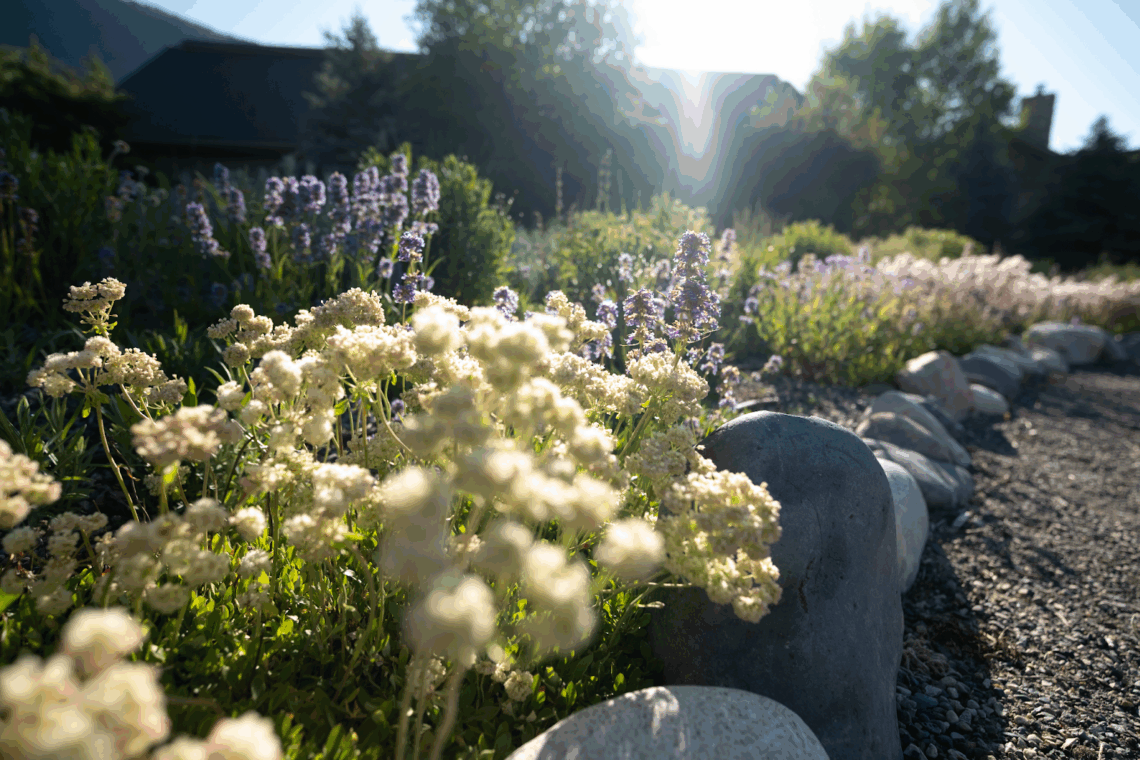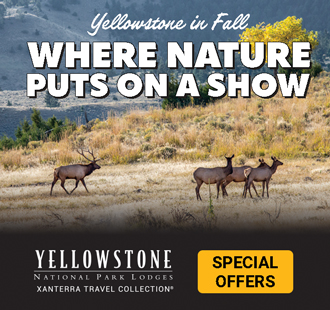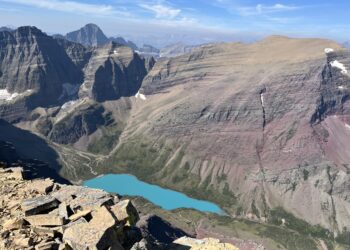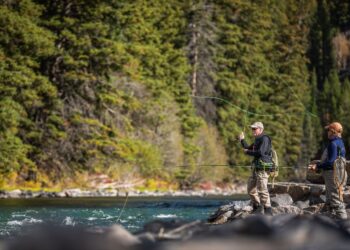By Ali Chipouras GUEST COLUMNIST
In the mountains of southwest Montana, every yard, hillside, forest, and river is part of something much bigger. Our landscapes are more than scenery, they’re living systems that support clean water, provide food and habitat for wildlife, and shape how fire moves across the land. When we care for these spaces thoughtfully, they return the favor: keeping our homes safer, our rivers cleaner, and our ecosystems healthier.
That’s the vision behind Alpenscapes, a community partnership between Big Sky SNO, Grow Wild, the Gallatin River Task Force, and the Big Sky Fire Department. Alpenscapes promotes beautiful, native, and sustainable landscaping to reduce wildfire risk, decrease water use, and conserve native species.
Living in Big Sky means more than adapting to the climate, it means living with it. It means understanding that fire is part of our ecosystem, that water is shared across seasons and that we are stewards of one of the last truly wild landscapes in North America. The way we shape our yards, what we plant, and how we care for the land directly affects the health of our rivers, the resilience of our forests, the abundance of wildlife and the safety of our homes.
Water-wise design of lawns
Snowmelt is Big Sky’s natural water bank. It recharges groundwater, keeps rivers flowing, and supports our entire ecosystem, from wildlife and recreation to the water we drink. But as droughts lengthen and snowpack declines, conserving that resource is becoming essential.
Outdoor water use in Big Sky increases by up to 160% between July and September, making irrigation the single largest use of community water during the summer months.
Traditional turf lawns are among the thirstiest features in any landscape, often requiring several times more water than native vegetation. Replacing grass with drought-tolerant native plants, installing drip irrigation, and watering efficiently are some of the simplest and most impactful ways to reduce use.

Native plants for a healthier foundation
Native plants do more than conserve water: they form the foundation of a healthy, self-sustaining landscape. These species have evolved for centuries in Montana’s mountain climate, adapting to dry summers, cold winters, and thin, rocky soils. Once established, they thrive without the need for pesticides, fertilizers, or heavy watering.
Many native Montana plants are also naturally snow-tolerant, built to withstand deep snow loads and long freeze-thaw cycles that can stress non-native ornamentals. Their deep root systems hold soil in place, prevent erosion, and filter water before it reaches our rivers.
Planting native is how we live in harmony with the land, ensuring that wildlife has food and habitat throughout the seasons. To best support biodiversity, aim for at least 70% of the plants in your yard.
By restoring native vegetation, homeowners can strengthen the local ecosystem, reduce maintenance needs, and create landscapes that thrive naturally in Big Sky’s unique alpine environment.
Fire resilience
Native plants also can play a key role in fire resilience, the third pillar of Alpenscape’s landscaping philosophy. When thoughtfully placed and well maintained, native vegetation can slow the spread of fire, reduce ignition risk, and help protect both homes and habitat.
Most homes are lost when embers ignite dry leaves, mulch, vents, decks, or fences immediately adjacent to the house, often long before the main fire front arrives. Low branches, dense shrubs, or wooden fences connected to structures can act as “ladders,” allowing flames to move from the ground up into trees and rooftops. Dry vegetation, overgrown shrubs, and stacked firewood near buildings act like fuel.
Creating defensible space is one of the most effective ways to reduce risk. Small design changes can make a big difference. A well-maintained native landscape not only connects your property to the surrounding ecosystem, but can also serve as a natural fire buffer, helping keep your home, and your community, safer.
Alpenscapes is here to help
Alpenscapes is here to help Big Sky residents create resilient outdoor spaces through free home site visits, local resources, and expert guidance from partners like Grow Wild, Big Sky Fire, Big Sky SNO, and the Gallatin River Task Force. To schedule a free site visit or explore local resources, visit Alpenscapes.org.
Ali Chipouras, writing on behalf of Big Sky’s Alpenscapes, is a sustainability and communications consultant with nearly a decade of experience helping organizations and communities in Montana advance their climate and resilience goals. Based in Bozeman, she enjoys spending time in the mountains.














